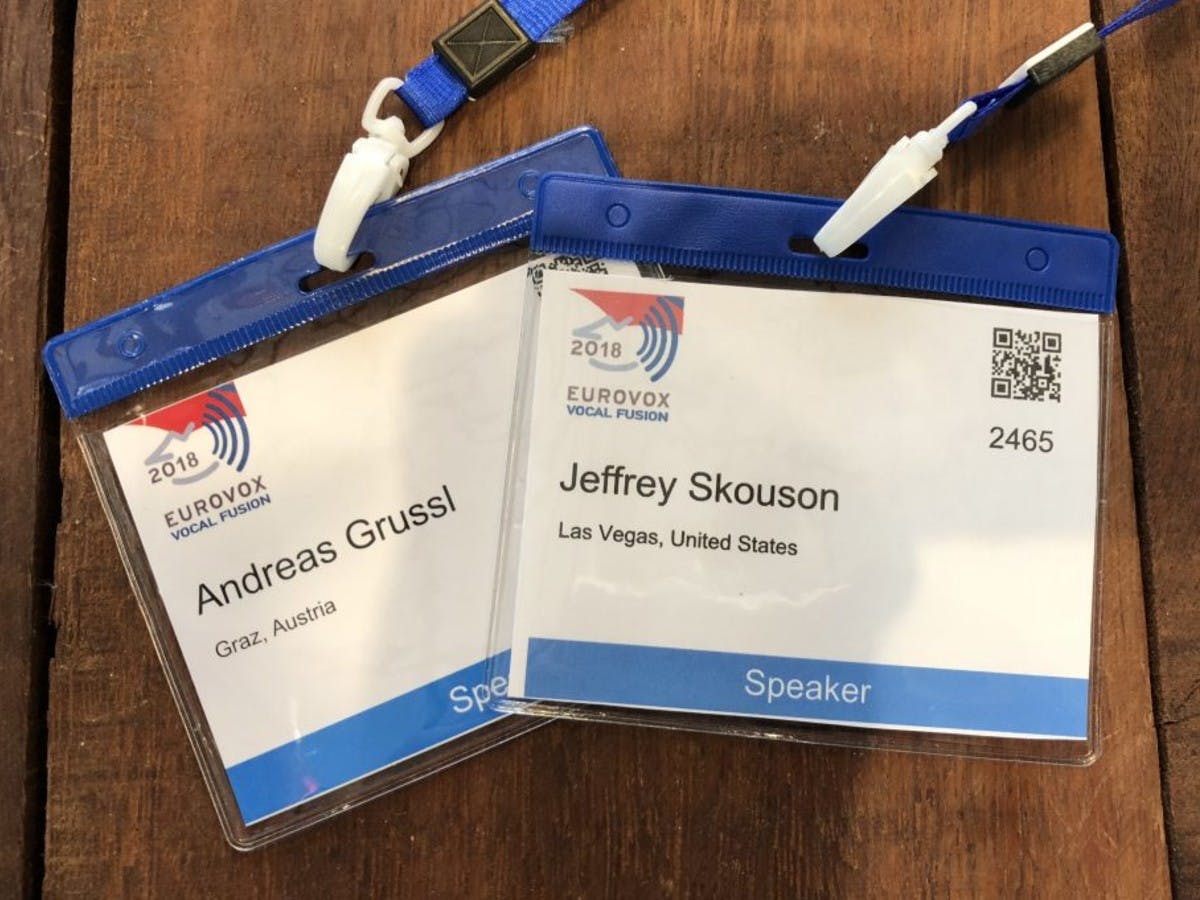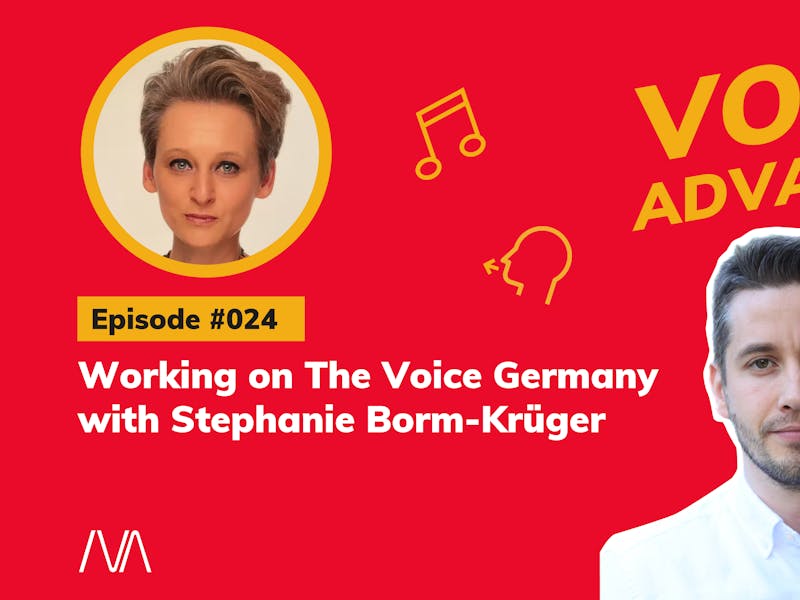We are delighted to announce that after 5 years, IVACON is back in person! Our exclusive week-long conference is tailored for singing teachers just like you.…
From August 30 to September 1, 2018, Jeffrey Skouson and Andreas Grussl (two of IVA’s founders) had the opportunity to lecture at Eurovox, the European Voice Teacher Conference, hosted by the European Voice Teacher Association (EVTA) in The Hague, Netherlands. Attendees came from all over Europe, and the conference covered a variety of topics, including teaching choir singers, getting to know “Swiss Yodel,” contemporary composing for voice, osteopathy in teaching singing, and many more. One of the highlights of the event was a workshop given by European musical theatre star Pia Douwes!

Of course Pia presented an amazing class on connecting, acting, and singing in musical theatre, but Jeffrey and Andreas certainly had a lot of great information to share in their workshop on the IVA Method.
Don’t you wish you could have been there? Well Andreas was kind enough to give us a recap on what he and Jeffrey shared in their class, so pull up a scenic picture of the Netherlands on your device and continue reading below—it’ll be just like being there . . .
In our workshop, “The IVA Method: Communication Between Voice Teacher and Singer,” Jeffrey and I showed our attendees how to communicate more effectively as voice teachers by using vocal exercises as tools of communication, emphasizing that if used correctly (in addition to the classical teaching strategies of demonstration and instruction), these vocal exercises open up a totally new and incredibly effective method of communication with the student.
When singers want to learn a new skill, we very often face the challenge of communicating with them what the results should look or feel like. Many students will struggle to make their instruments align with what we’re trying to accomplish so that they can produce the desired result. As teachers, we have all of this experience after years of developing our own skills, but passing those skills on to our students is where it gets tricky.
In most cases, simply demonstrating won’t enable a student to reproduce the desired result, especially if you move into the more challenging areas of the voice. Demonstrating yourself can also be misleading if your voice has a totally different quality than the student’s voice.
So when demonstration doesn’t work, most voice teachers would try giving verbal instructions. They’ll tell their students to do a certain thing (e.g., add more support, put the sound forward/backward, add more cry, add more twang/pharyngeal sound, etc.) or just describe to the student how the result is supposed to feel and what they have to do to achieve it. This approach works well if the student and teacher have the exact same understanding of the teacher’s instructions, but in reality, this kind of understanding only occurs through pure coincidence, though we’d certainly like to chalk it up to our pedagogical brilliance.
The blur of subjectivity that lies over everything related to how singers perceive their voices is simply too big. We all perceive and process experiences very differently as individuals, so verbal descriptions can never be accurate enough to fine-tune an instrument as highly sensitive as the voice. Sometimes you might get into the vicinity of what you’re looking for, but most of the time that isn’t close enough.
Luckily, there is a solution to this problem! You can simply use vocal exercises to communicate with your student. This is possible because every vowel, consonant, and sound (like a cry, twang, etc.) triggers a certain coordination in your instrument. If you as a teacher know how to combine these effects so that they trigger what you want the student to do, vocal exercises become the perfect solution in getting your message across to the student. Vocal exercises will trick singers into the coordination they are supposed to experience so that they can describe it to themselves and minimize the potential for miscommunication or misunderstandings.
After a short theoretical introduction to the subject, Jeffrey and I proceeded with the practical application of our workshop. A very talented Dutch musical theatre singer, Liset Vrugteveen, was so kind to be our guinea pig for the class. She let Jeffrey work with her voice in order to demonstrate what we were talking about.
We were very happy to have been given the honor of being part of this exchange of knowledge among voice teachers in Europe. We are already looking forward to being more involved in this great community of voice teachers in the future.
Effective communication with students is just one aspect of IVA's comprehensive pedagogical system. To learn more about our method for teaching singing, visit our 'become a teacher' page.
Related Articles
Singing Teachers Summit
A free, online summit for music educators
As a worldwide leader in vocal education, we're excited to host a Singing Teachers Summit on January 20th and 21st, 2024. This free, online event features a fantastic lineup of guest lecturers to offer insight on a wide range of…
Stepping Out of Your Comfort Zone with Stephanie Borm-Krüger How Performing Under Pressure Helps Unlock Your Creativity Do any of your students dream of performing on a TV show like The Voice or one of the Idols singing competitions? Then they’ll want to…








